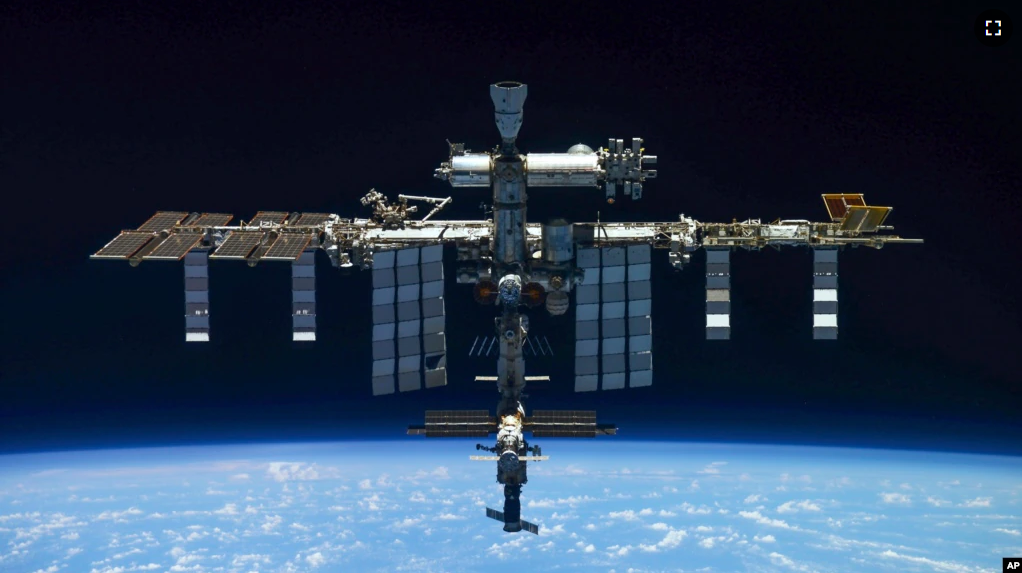A new experiment aims to study ways to produce huge amounts of special cells that could be used to treat many diseases.
The special cells, known as stem cells, arrived on a supply ship recently at the International Space Station for testing in Earth’s orbit.
The cells are part of a project led by scientists at Cedars-Sinai Medical Center in Los Angeles. The researchers are trying to find new ways to make large amounts of stem cells that can produce nearly any other kind of cell in the human body.
Researcher Dhruv Sareen’s own stem cells are among those now orbiting the Earth. The goal is to test whether the stem cells will grow better in zero gravity.
“I don’t think I would be able to pay whatever it costs now” to take a private ride to space, Sareen said. “At least a part of me in cells can go up!”
The experiment is the latest research project that involves sending stem cells into space. Some projects aim to overcome the difficulty of mass producing the cells. Others explore how space travel impacts the cells in the body. And some help scientists better understand diseases such as cancer.
The only stem cell-based products approved by the U.S. Food and Drug Administration (FDA) contain blood-forming stem cells from umbilical cord blood. These products are for patients with blood disorders such as kinds of lymphoma. There are no approved treatments using the kind of stem cells being sent to space, said Jeffrey Millman of Washington University in St. Louis.
But studies are underway involving stem cells that target health conditions such as macular degeneration, Parkinson’s disease and heart attack damage. Millman is involved in research that could lead to a new approach for treating Type 1 diabetes.
Promise and difficulties
Scientists see great possibilities for stem cells.
But stem cell research faces a problem. Earth’s gravity makes it difficult to grow the large numbers of cells that could be necessary for future treatments. Such treatments could require more than a billion cells per patient.
“With current technology right now, even if the FDA instantly approved any of these therapies, we don’t have” the ability to produce what’s needed, Millman said.
Millman said the problem is that, in large bioreactors, the cells need to be moved in a circular motion very quickly. This stress can cause most of the cells to die.
“In zero G, there’s no force on the cells, so they can just grow in a different way,” said Clive Svendsen of Cedars-Sinai’s Regenerative Medicine Institute.
The Cedars-Sinai team has sent up what are called induced pluripotent stem cells. Many scientists consider them the perfect starting materials for many treatments. They carry a patient’s own DNA, and their many uses make them similar to embryonic stem cells. But induced pluripotent stem cells are reprogrammed from adults’ skin or blood cells.
For their experiment, which is being financed by NASA, researchers sent into space a small container that holds bags filled with cells and all of the materials needed to keep them alive for four weeks. The cargo will also include neural stem cells that came from Svendsen. The scientists used stem cells derived from their own white blood cells because it was easy for them to approve their use.
The scientists will compare the cells in space with a similar group back on Earth. The research team will get the space experiment back in about five weeks, when it returns in the same SpaceX spaceship.
The experiment is designed to prepare the way for more NASA-supported research. If they are able to discover a way to make billions of cells in orbit, Svendsen said, the effects “could be huge.”
I’m John Russell.
Laura Ungar reported on this story for the Associated Press. John Russell adapted it for VOA Learning English.
_______________________________________________________________________
Words in This Story
stem cell – n. a simple cell in the body that is able to develop into any one of various kinds of cells (such as blood cells, skin cells, etc.)
umbilical cord – n. : a long, narrow tube that connects an unborn baby to the placenta of its mother
therapy – n. the treatment of physical or mental illnesses
bioreactor – n. a device in which living organisms create useful substances
stress – n. physical force or pressure
neural – adj. of, relating to, or involving a nerve or the nervous system
derive – v. to have something as a source : to come from something
